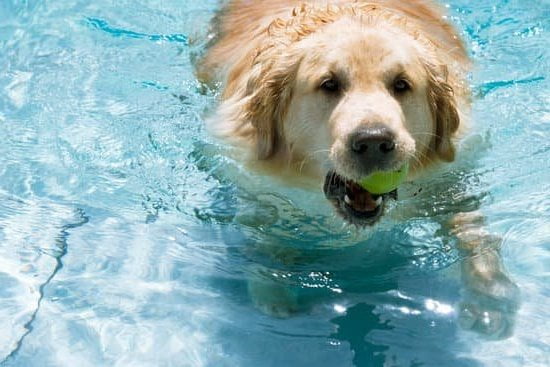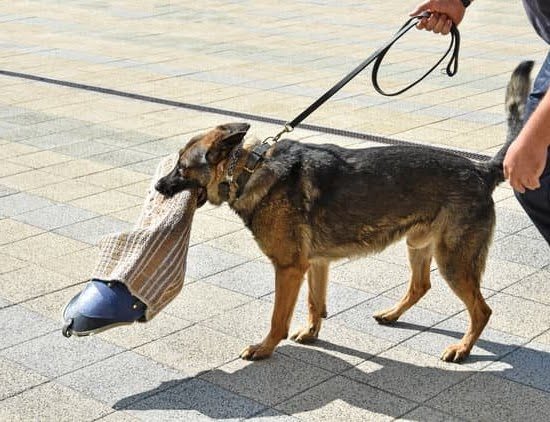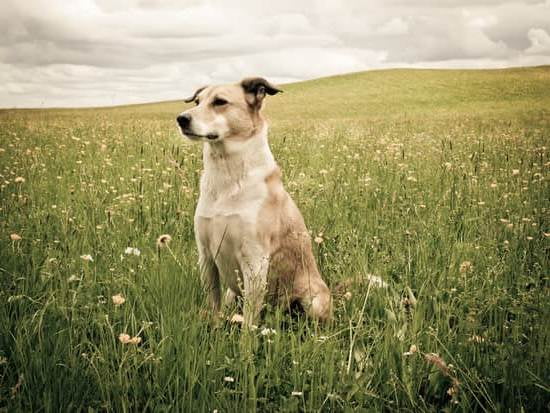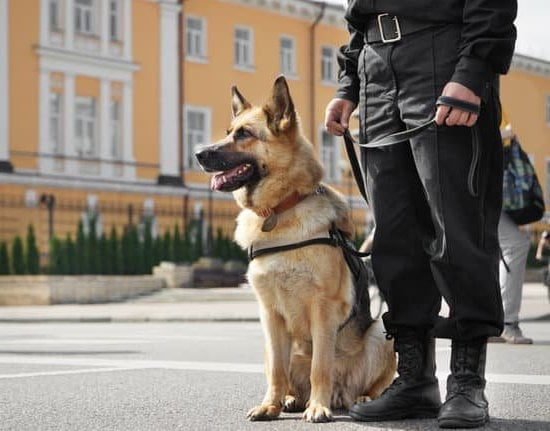Are you wondering how to train a small dog not to be aggressive? Many small dog owners struggle with their pet’s aggressive behavior, whether it’s towards other animals, strangers, or even family members. Understanding the causes of small dog aggression is the first step in addressing and correcting this concerning behavior.
There are various reasons why small dogs may exhibit aggressive behavior, from fear and anxiety to territorial instincts and past experiences. In order to effectively train a small dog not to be aggressive, it is essential to explore the underlying reasons for their behavior and identify common triggers that may lead to aggression.
Recognizing the signs of aggression in small dogs is crucial for pet owners seeking to address this issue. By understanding body language cues and identifying aggressive behavior patterns, owners can better intervene and implement positive reinforcement training techniques. Using rewards and implementing clicker training can encourage non-aggressive behavior in small dogs, making training a more pleasant experience for both the owner and the pet.
Proper socialization and exposure play a significant role in preventing aggression in small dogs. Early socialization helps them feel more comfortable in new environments and around unfamiliar people or animals. Introducing them properly to new stimuli can help mitigate potential triggers for their aggressive behavior.
Recognizing the Signs of Aggression in Small Dogs
Small dogs may exhibit signs of aggression for various reasons, from fear and insecurity to possessiveness or frustration. It’s essential for dog owners to be able to identify these signs early on in order to address the issue effectively. Some common signs of aggression in small dogs include growling, barking, snapping, lunging, and even biting. These behaviors can occur in response to specific triggers such as strangers approaching, other animals or even certain sounds.
In addition to these overt behavioral signs, it’s important for owners to pay attention to their small dog’s body language cues. These might include raised hackles, a stiff posture, a tense facial expression, or avoiding eye contact. Understanding these subtle cues can help prevent an escalation of aggressive behavior and provide an opportunity for training intervention before things get out of hand.
If any of the above signs are observed in a small dog, it is crucial for owners to take immediate steps towards recognizing and addressing the underlying cause of the aggression. Ignoring these warning signs can lead to serious consequences and can harm not only other pets or individuals but also the dog itself.
| Aggressive Behavior | Body Language Cues |
|---|---|
| Growling | Raised hackles |
| Barking | Stiff posture |
| Snapping | Tense facial expression |
| Lunging/Biting | Avoiding eye contact |
Positive Reinforcement Training Techniques
Training a small dog not to be aggressive requires dedicated effort and the use of effective positive reinforcement techniques. By focusing on rewarding desirable behavior, small dogs can learn to replace aggression with more appropriate responses. Positive reinforcement training involves using rewards to encourage a dog to exhibit specific behaviors, making it an ideal approach for addressing aggression in small dogs.
Using Rewards to Encourage Non-Aggressive Behavior in Small Dogs
Positive reinforcement training involves rewarding a small dog with treats, praise, or toys when they display non-aggressive behavior. For example, if a small dog typically reacts aggressively when meeting new people, the owner can use treats to reward the dog for staying calm and friendly during interactions. Over time, the dog will learn that being non-aggressive results in positive outcomes.
Implementing Clicker Training for Small Dogs
Clicker training is another effective positive reinforcement technique for training small dogs not to be aggressive. This method involves using a clicker device to create a distinct sound that signals to the dog when they have performed the desired behavior. The click is immediately followed by a reward, reinforcing the specific action or behavior. Small dogs can quickly learn to associate the click with positive consequences and adjust their behavior accordingly.
Socialization and Exposure
Socializing a small dog and exposing them to various people, animals, and environments from a young age is essential in preventing aggression. Early socialization helps small dogs become comfortable and confident in different situations, reducing the likelihood of aggressive behavior later on. When introducing a small dog to new experiences, it’s important to do so in a positive and controlled manner.
The Importance of Early Socialization
Early socialization, which typically begins during the first few months of a small dog’s life, can have a lasting impact on their behavior. Exposing them to different people, animals, sounds, and environments during this critical developmental period can significantly reduce the risk of fear-based aggression as they grow older. Properly socialized dogs are generally more relaxed, adaptable, and less likely to exhibit aggressive behaviors.
Proper Ways to Introduce Small Dogs
When introducing a small dog to new people or animals, it’s important to do so gradually and in a controlled environment. Positive experiences during introductions can help build trust and confidence in the small dog.
Owners should also pay attention to their pet’s body language during these interactions and step in if they show signs of distress or discomfort. Consistently positive exposure will help small dogs develop into well-adjusted pets that are less likely to display aggressive behavior towards unfamiliar individuals or animals.
Managing Triggers
One of the key aspects of training a small dog not to be aggressive is managing triggers that may cause them to exhibit aggressive behavior. Understanding what triggers your small dog’s aggression and using strategies to handle these situations can significantly help in preventing any aggressive behaviors. Here are some effective ways to manage triggers in small dogs:
- Identify trigger situations: It’s important to recognize the specific situations or stimuli that provoke aggression in your small dog. This could be encountering unfamiliar people, being around other animals, or certain noises.
- Avoidance when possible: If you know certain situations or environments trigger your small dog’s aggression, try to avoid these as much as possible. This could mean steering clear of crowded areas or noisy places where your dog might feel overwhelmed.
- Desensitization training: Gradually exposing your small dog to their triggers in a controlled and positive manner can help desensitize them over time. For example, if your dog is reactive towards other animals, slowly introducing them to well-behaved and calm pets can help reduce their aggressive response.
By actively managing trigger situations and implementing these strategies, you can create a more comfortable environment for your small dog and reduce the likelihood of aggressive behavior.
Remember that consistency and patience are crucial when working on managing triggers with an aggressive small dog. It may take time for your pet to become less reactive in certain situations, so it’s essential to remain dedicated to the process. Seeking professional help from a qualified dog trainer or behaviorist is also beneficial if you’re struggling with managing your small dog’s aggression triggers.
Consistency and Patience in Training
Small dog owners often underestimate the time and dedication required for training a small dog not to be aggressive. Consistent training methods are key in shaping a small dog’s behavior and preventing aggression. It is important for dog owners to understand that training a small dog is a long-term commitment that requires patience, repetition, and positive reinforcement.
Consistency in training means using the same commands, rules, and routines every day. Small dogs thrive on routine and structure, so it is important for owners to establish clear boundaries and stick to them. For example, if a small dog is not allowed on the furniture, all family members must enforce this rule consistently. Inconsistency can confuse a small dog and lead to frustration or anxiety, which may contribute to aggressive behavior.
Patience is essential when training a small dog not to be aggressive. It takes time for dogs to learn new behaviors and habits, so owners should be patient and understanding throughout the process. Training sessions should be kept short and fun to maintain the small dog’s interest and enthusiasm. If owners become frustrated or agitated during training, it can negatively impact the small dog’s progress.
Proper socialization with other dogs and people will help prevent aggression in small dogs by making them more well-adjusted and confident. Exposing small dogs to different environments, experiences, and stimuli at an early age can help reduce fear-based aggression later in life. Dog owners need patience during this process as not all dogs will react positively during socialization but consistent exposure can help alleviate the fears over time.
| Training Tips | Benefit |
|---|---|
| Use consistent commands | Establish clear boundaries for your pet |
| Keep training sessions short | Maintain your pet’s interest and enthusiasm |
| Patiently expose your pet to various situations during socialization | Prevent fear-based aggression through gradual exposure |
Seeking Professional Help
When dealing with small dog aggression, it is important to recognize when the assistance of a professional dog trainer or behaviorist may be necessary. Whether the aggression stems from fear, territorial behavior, or other triggers, seeking guidance from a professional can make a significant difference in effectively addressing the issue.
In considering professional help for aggressive small dogs, it is essential to understand when to consult an expert. Signs that may indicate the need for professional intervention include persistent aggressive behavior despite consistent training efforts, escalating aggression towards people or other animals, and difficulty managing trigger situations in public spaces.
Seeking the expertise of a professional dog trainer or behaviorist can provide personalized guidance tailored to the specific needs and triggers of your small dog. They can offer valuable insights and techniques to address the underlying causes of aggression and work with you to develop a customized training plan. Additionally, they can provide ongoing support and adjustments to the training approach as needed.
- When searching for a professional, consider asking for recommendations from veterinarians or fellow dog owners, and ensure that the trainer or behaviorist has experience in dealing with small dog aggression.
- Don’t hesitate to schedule an initial consultation to discuss your concerns and assess whether their expertise aligns with your needs. Remember that seeking professional help is not a sign of failure but rather a proactive step towards ensuring the well-being of your small dog.
Real-Life Success Stories
In conclusion, training a small dog not to be aggressive can be a challenging but ultimately rewarding process. By understanding the underlying causes of small dog aggression and recognizing the signs of aggressive behavior, pet owners can take proactive steps to address and correct their dog’s behavior. Positive reinforcement training techniques, such as using rewards and implementing clicker training, have been proven effective in encouraging non-aggressive behavior in small dogs.
Socialization and exposure to new people and animals are crucial in preventing aggression in small dogs, as early socialization can help them become well-adjusted and confident pets. Additionally, managing triggers and consistently practicing patience and dedication in training are key components of successfully training a small dog not to be aggressive.
For those who may find themselves struggling with their small dog’s aggression, seeking professional help from a dog trainer or behaviorist can provide valuable guidance and support. By learning from real-life success stories of small dog owners who have successfully trained their pets not to be aggressive, pet owners can feel empowered and inspired on their own training journey.
With the right tools, knowledge, and commitment, it is possible for any small dog to overcome aggression and become a well-behaved and beloved companion.
Frequently Asked Questions
How Do You Stop a Small Dog From Being Aggressive?
Stopping a small dog from being aggressive requires identifying the root cause of the aggression. It could be fear, anxiety, or territorial behavior.
Consulting with a professional dog trainer or behaviorist can help determine the triggers and develop a strategy to address them. Positive reinforcement training, socialization, and providing a secure environment are all important in curbing aggression in small dogs.
How Do You Discipline an Aggressive Small Dog?
Disciplining an aggressive small dog should focus on positive reinforcement rather than punishment. Consistent obedience training, setting clear boundaries, and redirecting negative behaviors towards positive ones are effective methods to discipline an aggressive dog. It’s important to avoid physical punishment as it can escalate aggression and damage the bond between the owner and the dog.
Can Aggression Be Trained Out of a Dog?
Aggression in dogs can be trained out through consistent and positive reinforcement training techniques. By addressing the underlying causes of the aggression and modifying their behavior through training and socialization, many dogs can learn to manage their impulses and respond differently in challenging situations.
However, it’s important to note that some dogs may require professional help from a certified dog trainer or behaviorist to address deep-seated aggression issues effectively.

Welcome to the blog! I am a professional dog trainer and have been working with dogs for many years. In this blog, I will be discussing various topics related to dog training, including tips, tricks, and advice. I hope you find this information helpful and informative. Thanks for reading!





